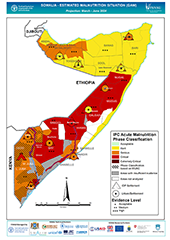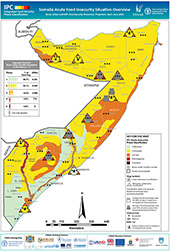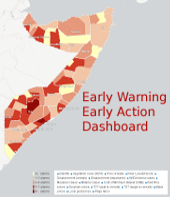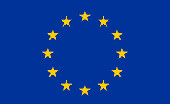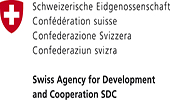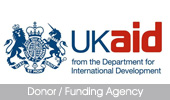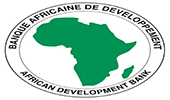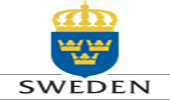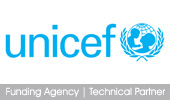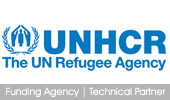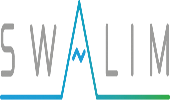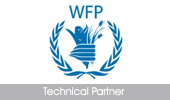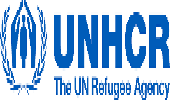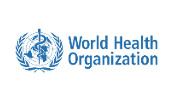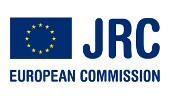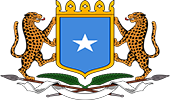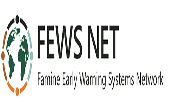Sectors / Gender
Gender
The primary objective of drafting this report is to share the existing recent literature on the traditional and changing gender roles within pastoral, agro-pastoral, riverine, urban and IDP communities in Somaliland, Puntland and South Central. This informs identification of data gaps and recommendations.
FSNAU intends to put this information to use in several ways: to strengthen routine FSNAU data collection tools and analysis from a gender perspective and to give strategic input into a planned FSNAU stand-alone gender study on Somalia. The focus of the stand-alone study is to gather gender information on Somalia food security, nutrition and livelihoods that will complement FSNAU’s routine data collection processes. Additionally, the Compendium will provide reference and baseline understanding of the gender trends in Somalia to support the Food Security, Livelihoods and Nutrition Teams of FSNAU in establishing measurable gender indicators and improve approaches for collecting gender-specific information and methodologies, and addressing the existing gender imbalance in enumerators.
In collating the information available, the authors of this report, conducted a desk review of the documented literature in Somalia since 2007. A primary source was FSNAU data which has been supplemented by other available sources. The review revealed that there is a wealth of information on traditional and changing gender roles and responsibilities in food security, livelihood and nutrition but this had not been compiled into a user-friendly central reference. Some of these findings include;
• Both men and women make significant but distinct contributions to the household economy.
• The past and existing nutrition surveys focus almost entirely on children under five years, pregnant and lactating mothers and women of reproductive age. An understanding of the nutritional status of other vulnerable groups such as older men and women, adolescent girls and chronically sick males and females (of all ages) is lacking.
• Somalia men and women are both active in food production: men 54.1 percent and women 45.9 percent (FAO State of Food and Agriculture Report - 2010/2011). Data 2010.
• The synergistic male-female partnership in cropping and protein production is under stress due to competition for grazing, land and water.
• A disproportionate number of men dying in conflict as well as more male migration had contributed to the increased number of female-headed households (FHHs). There have been resulting changes in intra-household livelihood roles.
• Gender-specific security and protection concerns impact internally displaced persons (IDPs) and urban migrants. • Males predominate in camel/cattle production and sale: females sell and process milk.
• Females predominate in all aspects of sheep and goat (shoat) production with shared male and female roles in
marketing as well as butchering.
• There is a gender divide in marketing: men sell for export and women sell for local consumption.
• Cropping involves a mix of gender-specific and shared tasks.
• Local vegetable, milk and cereals markets in many areas are dominated by women.
• Milling, commercial transport, agents and interlocutors are mainly men.
• Women are responsible for erecting and tear-down of shelters, foraging for firewood and fodder.
• Presence of a son gives a woman better access to livestock/assets if her husband dies.
• Inter-clan conflicts deter men from participating in trade and instead open an opportunity for women to undertake
more trade, as women are considered peacemakers, with no primary role in inter-clan conflict.
• There are indications that women are increasingly using loans as a coping strategy. In some areas as many women
as men are getting loans.
• More men are entering traditionally female areas of petty trading and house assembly.
• An increasing number of women are active in the formal and non-formal sectors and are diversifying how they earn
income. Most specifically, women are very active in petty trade and increasingly active as casual workers, leaving
less time for good parenting.
• There is evidence that girls are pulled from school to allow women to earn.
In light of the above, the Compendium clearly supports the need for a gender stand-alone survey and encourages immediate action to recruit additional female enumerators to reduce the current gender gap.
Download Full Report (PDF, 2.7 MB)
--------------------------------------------------------------------------------------------------------------
The Deyr 2012 assessments conducted in Somalia collected gender data in rural (pastoral, pastoral destitute, agro-pastoral) and urban livelihoods and among IDPs. The gender findings are reported based on the sex of the household head. The analysis focused on socio-economic variables which explored livestock ownership and management of household income. Gender roles in farming were also documented.
Key results:-
- Among the urban poor, household heads were predominantly male while, amongst the IDPs, women predominate as heads of household.
- Urban poor men obtain income from employment (casual labour), limited livestock sales and, in some cases, petty trade, while urban poor women derive income from the sale of animal products, petty trade, humanitarian assistance and housework. Children (data collected was not disaggregated by sex) are also engaged in income-generating activities, earning income from the sale of animal products, casual domestic work and petty trade.
- The analysis indicates that many IDP women are their household’s main income provider. Their sources of income include wages from casual labour, the sale of livestock and bush products, humanitarian aid, the sale of domestic assets (utensils, furniture) and gifts. Men’s sources of income include self–employment (sale of handicrafts, water, meat and bush products), humanitarian assistance, gifts and casual labor.
- In rural livelihoods, men primarily own and raise large ruminants (cattle and camel). Small ruminants (sheep and goats) are co-owned by men and women although it is mainly the women who engage in decisions concerning raising, milking and slaughtering small ruminants. Generally, men manage the sale of all the livestock while women manage the sale of livestock products. Men also supplement their income from the sale of charcoal, fishing and self-employment while women acquire additional income from remittances, sale of gums, resin, social support in the form of gifts and collection of zakat as job opportunities are limited. Women and men participate equally in planting/sowing, harvesting and threshing. Additionally, men engage in land preparation while women engage more in weeding and irrigation.
There was equally poor primary school attendance for girls and boys in IDP settlements and urban areas in South-Central. However, in the urban areas of the North, school attendance in the three months before the survey was higher than 80 percent for both boys and girls.
Download Full Report (PDF, 229KB)
--------------------------------------------------------------------------------------------------------------
Routinely in April 2012, FSNAU did assessments of Mogadishu urban and IDP settlements. The studies quantified more gender dynamics than earlier assessments. The gender analysis tool employed was social resource mapping. This delved into the socio-economic characteristics/variables by sex of household head, supplemented by limited insight into intra-household activity. Urban respondents were 36.3% female (234) and 63.7% male (411). There was closer to a gender balance of respondents living in IDP settlements: 52.4% females (312) and 47.6% (283) males. Using the definition of household head as the person who is the household decision-maker, respondents identified women as heads of nearly two out of three households (urban: 68.8% / IDP: 63.1%), suggesting women’s increased economic role is recognized as bringing increased decision-making power.
Key results of the assessment:-
- Casual workers, salaried workers and the self-employed in both male and female headed urban households are predominantly male. These income avenues are sharply reduced for IDPs, although men still have more opportunities than women, forcing both IDP men and women into a precarious dependence on unprotected and irregular casual work and petty trading.
- Women predominate in petty trade in both urban and rural households and are more heavily dependent on informal foraging and crop resale (i.e. vegetables).
- Both men and women have more diversity in their income mix in urban areas.
More urban households headed by women, than men, go into debt to buy food staples in contrast to more IDP male-headed households. This may co-relate to gifts/zakat flows being reported by more IDP women than men, with IDP female-headed households consistently being the biggest percentage of recipients. This contrasts to urban respondents reporting that most gifts/zakat recipients are women in male-headed households.
Download Full Report (PDF, 327KB)
--------------------------------------------------------------------------------------------------------------
In November-December 2010, FSNAU and partners successfully piloted food security urban survey in five towns of the North West of Somalia namely: Boroma, Gebiley, Berbera, and Zeylac and Hargeisa. A multi-stage cluster sampling with probability proportional to size method was employed in the survey with a sample of 243 households who were selected randomly using systematic sampling method.
To identify the socio-economic factors informed by a gender perspective that correlate with food security vulnerability, the following variables were considered due to their relative importance in determining household food security, namely: household headship; household size and per capita expenditure; source of income; access to productive labour; assets e.g. land, education, health care, remittances and non-productive or basic assets, such as fridge, motor vehicle and mobile phones.
This Gender Facts and Figures Series is a snapshot of gender indicators considered influential in determining food security and vulnerability.
Key messages:-
- The urban Northwest households are increasingly becoming feminized, with the population of female headed households at 53% percent. The increase is an indicator of increasing economic freedom for women as well as the changing traditional gender roles.
- Male and female headed households are able to meet their minimum expenditure baskets (MEB). However, female headed households are able to do so by diversifying their income sources through upholding 2-3 jobs.
- Male headed households have larger families, and more stable incomes from formal employment in government institutions and humanitarian agencies. The large household size could be attributed to prevalence of polygynous marriages and also presence of temporary or permanent relatives.
- Illiteracy rates are high among female heads of households, at 65 percent, making it difficult for them to access formal employment.
- Gender disparity in school attendance is high (in favour of boys) with a GPI of 0.75 and 0.48 in secondary and tertiary school respectively. Policy intervention and affirmative action on education at higher level would facilitate women’s future access to formal employment.
- Health care facilities are scarce with 82 percent of female headed households compared with 62 percent of male headed households accessing health services from pharmacies at higher cost compared to other health services providers.
- Charcoal is the main energy source in majority of households with no difference based on sex of the household head.
